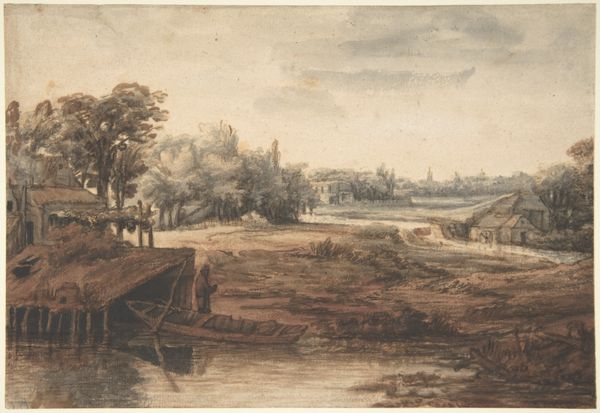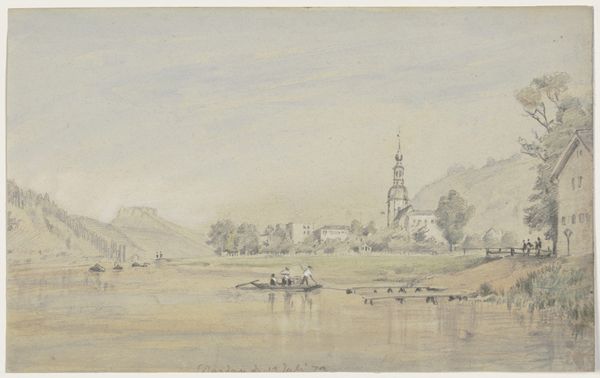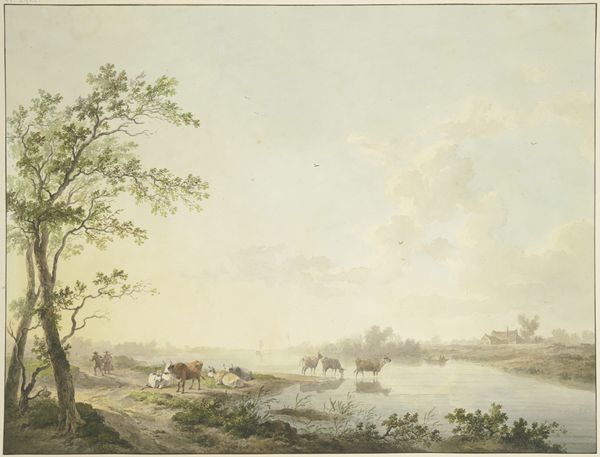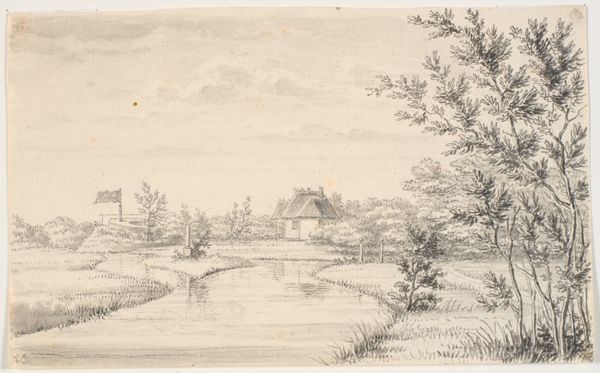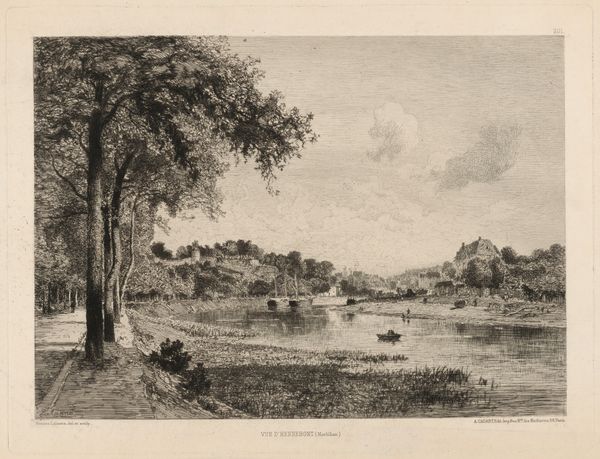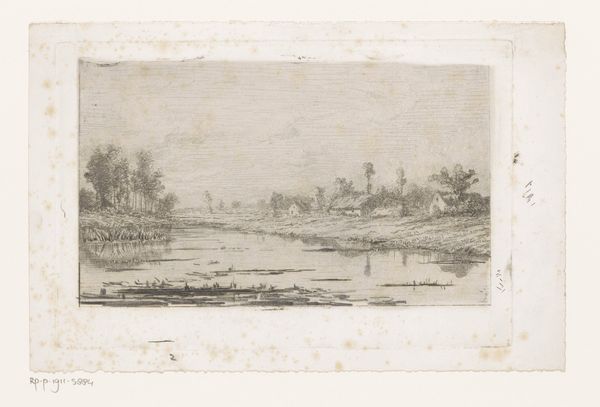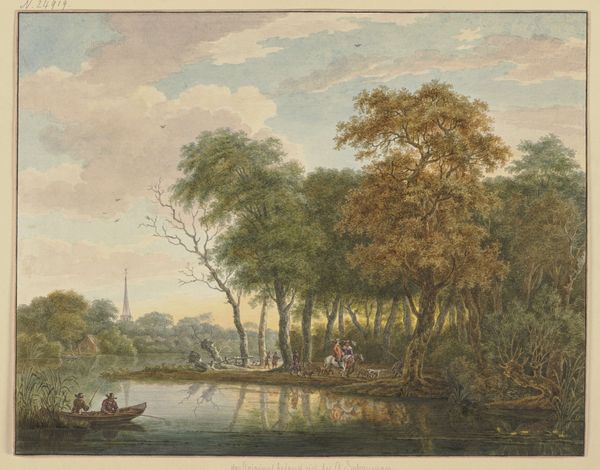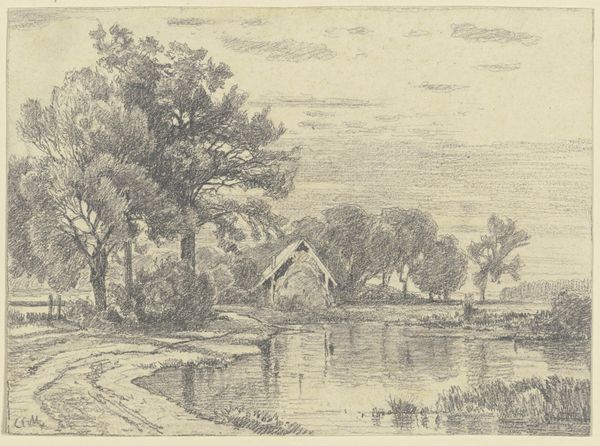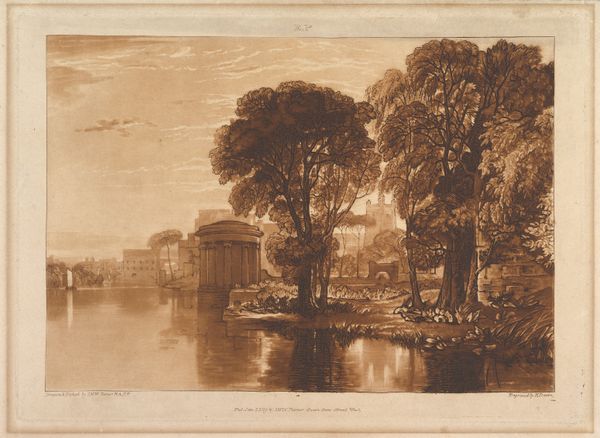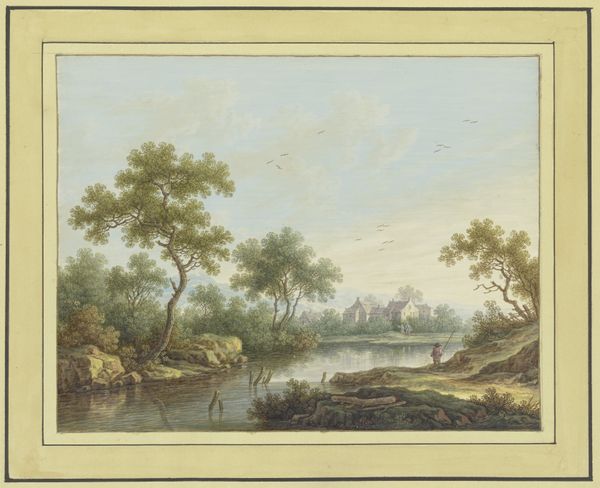
drawing, plein-air, watercolor
#
drawing
#
plein-air
#
landscape
#
figuration
#
watercolor
#
romanticism
Dimensions: Sheet: 14 11/16 × 20 13/16 in. (37.3 × 52.9 cm)
Copyright: Public Domain
Editor: This is "Ruins at Oestergoedland" created between 1791 and 1805, by Pehr Nordqvist. It's a plein-air drawing, rendered in watercolor. I’m really drawn to the stillness of the water, it feels almost like a mirror reflecting not just the landscape, but also perhaps a bygone era. What do you see in this piece? Curator: What strikes me most is the interplay of decay and vitality. We have the crumbling ruins suggesting the passage of time, but juxtaposed with the everyday activity of people on the water. The scene, bathed in a gentle, almost ethereal light, invites reflection. Editor: That's a really interesting way of putting it. Do you think Nordqvist was trying to make a comment on the impermanence of things? Curator: Possibly. Think about the Romantic period, a time when artists were fascinated with nature's power and the ruins of civilization. It's as if Nordqvist is reminding us that everything, even the grandest structures, eventually return to nature. Tell me, does the color palette contribute to that sense for you? Editor: Absolutely, the muted blues and greens give it a somber, almost melancholic feel. It feels so immediate, as if he captured that precise moment. Curator: Yes! The lightness of the watercolour technique emphasizes the ephemeral. Perhaps also his personal view on his homeland at a time of immense changes sweeping Europe. Editor: I see what you mean! I hadn't considered the broader historical context, focusing too much on just what's immediately visible in the landscape itself. It's given me a whole new appreciation for the piece. Curator: And me! Discussing it from your fresher eyes really helped emphasize how vital the present remains. We might romanticize decay, but folks need to make a living, don’t they!
Comments
No comments
Be the first to comment and join the conversation on the ultimate creative platform.
